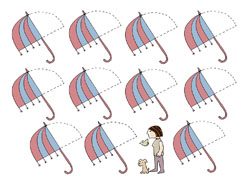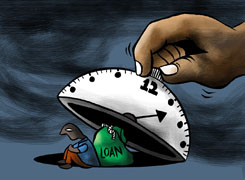Radheshyam Zanwar |6751 Answers |Ask -Follow
MHT-CET, IIT-JEE, NEET-UG Expert - Answered on Jul 21, 2025
Based in Aurangabad, Maharashtra, it provides coaching for Class 10 and Class 12 students as well.
Since the last 25 years, Radheshyam has been teaching mathematics to Class 11 and Class 12 students and coaching them for engineering and medical entrance examinations.
Radheshyam completed his civil engineering from the Government Engineering College in Aurangabad.... more

This was my first drop for neet and i am planning to take a second drop and also give jee mains next year but i am scared what if my second drop affect placements
Put all the options aside, i.e., appearing for NEET and JEE in 2026. Generally, no magic happens after taking one drop with NEET or JEE. It would be better to take admission to any preferred private college based on your choice, whether for B.Tech or any medical course. There are many medical courses through which you can establish your career in the next 4-5 years. If you're not interested in science, then choose any preferred career path, but do not repeat NEET or JEE. The final decision will be yours.
Good luck.
Follow me if you receive this reply.
Radheshyam
You may like to see similar questions and answers below
Dr Nagarajan J S K |2577 Answers |Ask -Follow
NEET, Medical, Pharmacy Careers - Answered on Mar 29, 2025
Nayagam P P |10859 Answers |Ask -Follow
Career Counsellor - Answered on Jul 10, 2025
Nayagam P P |10859 Answers |Ask -Follow
Career Counsellor - Answered on Sep 03, 2025
Ramalingam Kalirajan |10908 Answers |Ask -Follow
Mutual Funds, Financial Planning Expert - Answered on Dec 20, 2025
Ramalingam Kalirajan |10908 Answers |Ask -Follow
Mutual Funds, Financial Planning Expert - Answered on Dec 20, 2025
Naveenn Kummar |237 Answers |Ask -Follow
Financial Planner, MF, Insurance Expert - Answered on Dec 20, 2025
Ramalingam Kalirajan |10908 Answers |Ask -Follow
Mutual Funds, Financial Planning Expert - Answered on Dec 19, 2025
Nayagam P P |10859 Answers |Ask -Follow
Career Counsellor - Answered on Dec 19, 2025
Ramalingam Kalirajan |10908 Answers |Ask -Follow
Mutual Funds, Financial Planning Expert - Answered on Dec 19, 2025
Ramalingam Kalirajan |10908 Answers |Ask -Follow
Mutual Funds, Financial Planning Expert - Answered on Dec 19, 2025
Ramalingam Kalirajan |10908 Answers |Ask -Follow
Mutual Funds, Financial Planning Expert - Answered on Dec 19, 2025
Radheshyam Zanwar |6751 Answers |Ask -Follow
MHT-CET, IIT-JEE, NEET-UG Expert - Answered on Dec 19, 2025
Radheshyam Zanwar |6751 Answers |Ask -Follow
MHT-CET, IIT-JEE, NEET-UG Expert - Answered on Dec 19, 2025























